






Above photos illustrates a British P1804 full length obverse and reverse perspectives which was captured by the American Navy and put into its arms inventory for service.
This cutlass certainly has seen sea service as it has an overall aged patina and slight pitting, particularly on the blade. This specific British P1804 cutlass is in our collection and historically unique in that it was captured by American naval forces and put into the US Naval invenory for shipboard use by having the rack number "07" pin stimpled/stamped onto the lower lobe of the figure 8 guard.

The above P1804 Pattern Royal Navy cutlass is maker marked (Wooley & Deakin) on the spine along with the appropriate Royal Ciphers and Arsenal Marks on the blade. A perfect example of a regulation P1804 cutlass in museum quality investment grade condition.

Above is another P1804 Pattern Royal Navy cutlass clearly marked with the Royal Cipher and Arsenal Marks but the maker mark on the spine is not legible enough to discern. However this cutlass is also in extremely fine condition and comes with a handcrafted wooden placque. Another perfect example of a regulation P1804 cutlass in museum quality investment grade condition.
Some History: The P1804 was well established and well represented during the many and various naval engagements of the Napoleonic Wars. This P1804 was both used and copied by many European and Scandinavian nations during this period. Both the Swedish and Norwegian navies of the time purchased copies of the P1804 cutlass from England, with these export models being slightly shorter than the regulation cutlass ordered for the British Royal Navy.
The Model P1804 cutlass was a regulation sea service weapon used by the British Royal Navy at both Trafalgar against the French and Spanish Navies and during the War of 1812 with the United States. Both the regulation and non-regulation models of the P1804 was widely distributed as the standard naval cutlass used to board and repel boarders in the British Naval, Merchant and Fleets of Privateers with government issued Letters of Marque.
There was a fair amount of these captured British Sea Service Weapons (cutlasses, boarding pikes, boarding axes, etc) found as part of the American Federal Navy inventory after the War of 1812, as much of this conflict was a sea war with much of it between the respective "Privateers" of each country. After the Civil War from about the 1880's until just prior to WWI the US Navy sold alot of its dated inventory to a company called "Bannerman" who periodically issued catalogs which showed their inventory.
And alot of these early 19th century weapons were cataloged for sale along with photos - great for us historians and researchers.
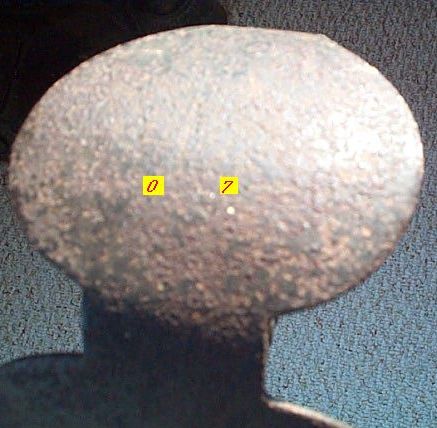
Photo to the left shows the barely discernable "07" pin punched (called "stimpled") into the bottom guard of the British P1804 Cutlass. The "07" is clearly visible when physically handling the piece. While in excellent condition for its age, due to the overall pitting as can be expected from steel or iron being kept in salty wet environments such as aboard ship, it is considered to be in relic condition.
While the exact circumstances of how this British naval cutlass ever got into the American Navy or aboard a Privateer will never be ascertained, however the period pin punched rack number "07" as was found on the lower or bottom lobe of the figure 8 clearly indicates that it was put into inventory and used aboard an American Naval ship as a sea service weapon as this was the customary approved method aboard American fighting vessels.
This typical American inventory control procedure clearly demonstrates that it was used aboard an American naval vessel from the early to mid 19th century! Pin punching or stimpling numbers and letters by hand onto naval cutlasses and other sea service weapons such as boarding axes and boarding pikes was widely used by the American navy as part of its shipboard edged weapon inventory and rack numbering system.
The British Royal Navy had very strict regulations and prohibitions against defacing, marking or otherwise personalizing the edged weapons used in sea service in any manner while the American navy was as equally lax and more concerned with fit and function over form.
It wasn't until the mid-19th century that the British Navy on the P1845 pattern cutlass adopted an inventory and rack numbering scheme using small brass triangular plates which were used on their naval cutlasses to stamp shipboard inventory and rack numbers.
| Good Condition with even patina - Classical Figure 8 Hilt 1804 Pattern British Naval Cutlass used by the Royal Navy as a sea service weapon from 1804 thru 1845 when a new cutlass was introduced. Straight flat blade with stamped crown, ribbed iron grip and rack number "07" pin stamped onto the lower guard indicating it was pressed and put into service in the American navies inventory. Found in the United States |
 |
|
540 659 6209 |
| Excellent Condition - Classic post-1800 figure 8 hilt with cast iron ribbed grip, maker stamped on the spine "WOOLLEY DEAKIN", King George III Royal Cipher "GR" in script stamped on the blade, arsenal marked with "Crown over 4". Museum quality condition found in Canada. |
 |
|
|
| Excellent Condition - Classic post-1800 figure 8 hilt with cast iron ribbed grip, maker stamped on the spine indecipherable, King George III Royal Cipher "GR" in script stamped on the blade, arsenal marked with "Crown over 1". Museum quality condition found in the United States. |
 Click Photo |
|
Sold |
| Excellent Condition - American Captured! Classic post-1800 P1804 figure 8 hilt with cast iron ribbed grip, straight unfullered blade, scripted King George III Royal Cipher "GR" stamped on the blade below the Royal Crown along with a Smaller "Crown" above the Numeral "4". This Cutlass is also Maker Marked with "J.GILL" Stamped on the Spine. The pointed tip has been rounded off in the distant past when the cutlass was taken out of service. The "American Captured" Provenance of this Cutlass Can be Established by the Roman Numeral LXVI (or perhaps a C LXVI) cut into the spine which was solely an American convention during the War of 1812 to identify inventory and/or where the cultass was kept for use! Additionally, there is a round hole cut into the top of the front guard which would have been done by American sailors when this captured cutlass was pressed into service. The hole was used to string a leather lanyard thru it and then have it wrapped around the sailors wrist so that when it was dropped or slipped off (due to blood) in battle it could be quickly and easily re-gripped. |
 Click Photo |
|
|
| Elegant in Their Simplicity! Custom Crafted Wooden Wall Brackets Specifically for a Cutlass Display or Sword Display for a Secure, Beautiful and Professional Presentation. These Handcrafted Wooden Wall Brackets or Wall Mounts Are Made for the Wide and Large Hilts Normally Found on Cutlasses and Some Swords and Prevent the Hilt or Cup From Touching the Wall. The TPL Wall Brackets Come Complete with 2 Brackets and 2 Mounting Screws, and are Available in 3 Sizes with a Choice of Oak or Walnut Woods! |
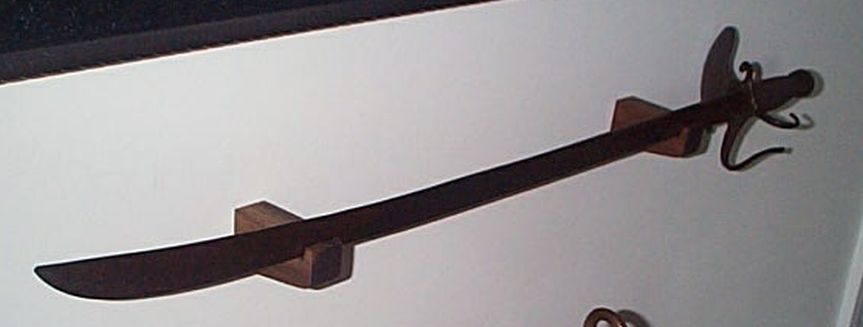 Click Photo |
2.25" 2.75" 3.75" specify length and either Oak or Walnut when calling. |
540 659 6209 |
| The Real Deal! Fully Restored Antique Trunks Like Sea Chests, Pirate Chests, Treasure Chests! |
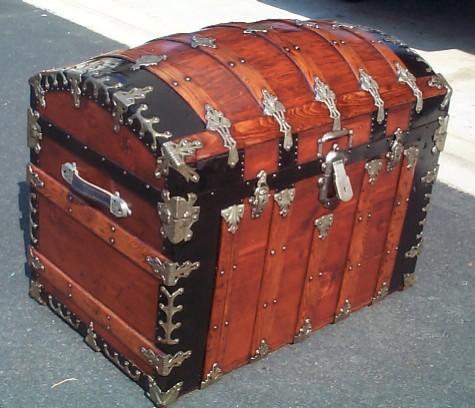 Click Here To Review Sample Engravings |
|
| Custom Designed, Handcrafted, and Hand Lettered in Caligraphy on your Antique Chest |
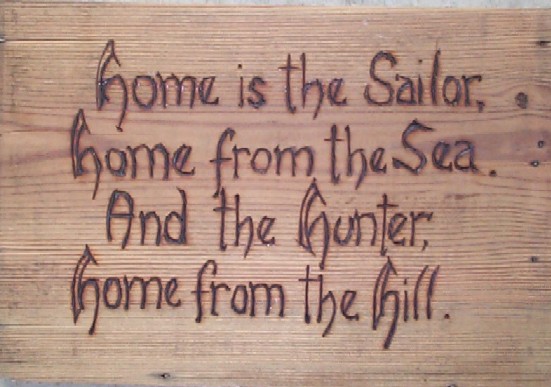 Click Here To Review Sample Engravings |
|
| Customer Photographic Examples of our Antique Trunks Being used as a Military or Naval Retirement Shadow Box and Storage Chest!! |
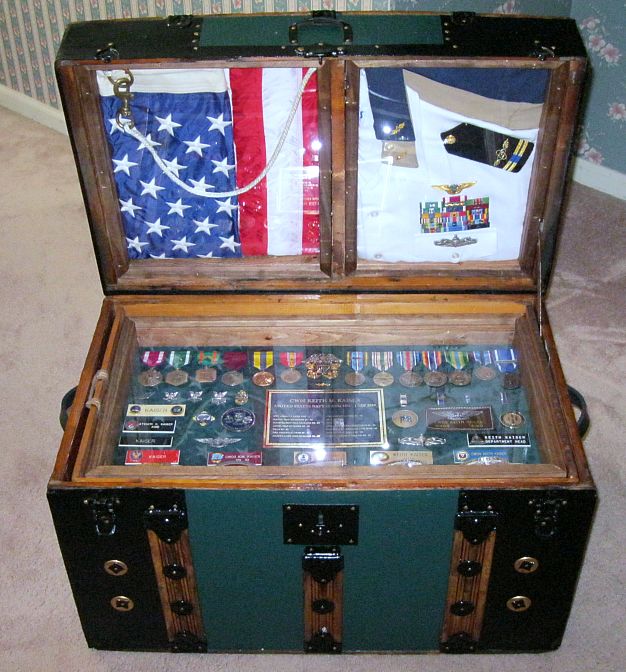 Click Here for Sample Shadow Box Photographs From Customers |
|